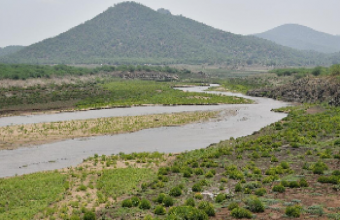Situated along India’s east coast, the Cauvery basin is spread over 1.5 lakh sq km, which comprises on-land (25,000 sq km), shallow offshore areas (30,000 sq km), and deep water offshore areas (around 95,000 sq km) (Photo: E Lakshmi Narayanan)
Source- thehindubusinessline
February 19, 2023 - Updated 05:30 pm IST
Director (Exploration) says they are 'looking into various financial and administrative regulatory policies and seeing whether it is conducive.'
State-run Oil and Natural Gas Corporation (ONGC) has decided to start drilling in the ultra-deep waters of the Cauvery basin in the next financial year, beginning in April 2023.
These are part of the domestic exploration and production (E&P) major's efforts to scout for hydrocarbons in ultra-deep waters along India's eastern and western coast.
"We also have a lot of foreign MNCs who are interested, and they are studying data. They are looking into various financial and administrative regulatory policies and seeing whether it is conducive," ONGC Director (Exploration) Sushma Rawat told the business line.
The Cauvery basin, situated along India's east coast, is spread over 1.5 lakh sq km, which comprises on-land (25,000 sq km), shallow offshore areas (30,000 sq km), and deep water offshore areas (around 95,000 sq km).
For exploration and extraction of oil & gas from complex and ultra-deep waters along the east and west coasts, ONGC has inked a memorandum of understanding (MoU) with oil giants ExxonMobil and Chevron.
"The MoUs are for conducting joint and individual technical studies. We expect Exxon's study to end by March and Chevron's by December 2023. They will move ahead once these studies are over," Rawat added.
Exploring ultra-deep waters
Rawat explained that the government had freed a lot of 'no go' zones in the western and eastern offshore.
"ONGC has been trying to acquire more acreages offshore. We have a good idea of oil & gas availability in the eastern and western offshore. "We aim to acquire almost 1 lakh sq km of acreage every year so that we can have 5 lakh sq km in the next three years," she added.
The PSU conducted basin scale models of petroleum system modeling (PSM) and developed standard risk segment maps detailing the hydrocarbon potential regarding generation and accumulation.
Many acreages need to be probed through drilling, even within category-1 basins. This is why ONGC is exploring partnerships for deep and ultra-deep waters; Rawat added that the company could go to more than 2,500 meters of water.
Category-1 basins are those which have reserves and have started production.
"We are also seeking partnerships in terms of data processing. With ExxonMobil, we have inked an MoU, and they have purchased seismic data from the National Data Repository of the Directorate General of Hydrocarbons. Similar is the case with Chevron," she said.
Exploration activity
Since FY20, ONGC has acquired 4,118 line km (LKM) of two-dimensional (2D) data and 18,519 sq km of three-dimensional (3D) seismic data as a part of its exploration activity.
It has drilled 323 exploratory wells, which established around 132.65 million tonnes (MT) of 2P (Proven and Probable) Oil Initially In-Place (OIIP) reserves with 43.5 MT estimated ultimate recovery (EUR).
The E&P major has oil reserves in eight sedimentary basins, with a total 2P resources of 326.87 MT as of April 2022.
Since FY20, under the National Seismic Programme (NSP), the government acquired 2D seismic data of 46,960 LKM.
Besides, another 22,500 LKM of 2D seismic data was acquired in the Andaman offshore, and 32,435 LKM of data under the Exclusive Economic Zone (EEZ) survey till January 15, 2023.
Source- www.thehindubusinessline.com












